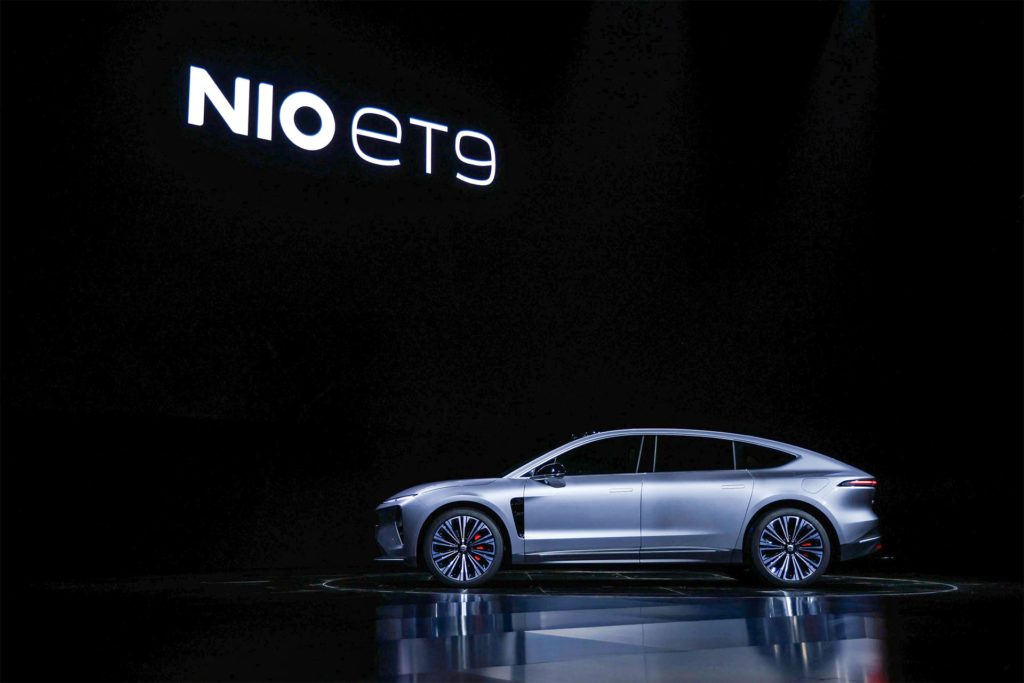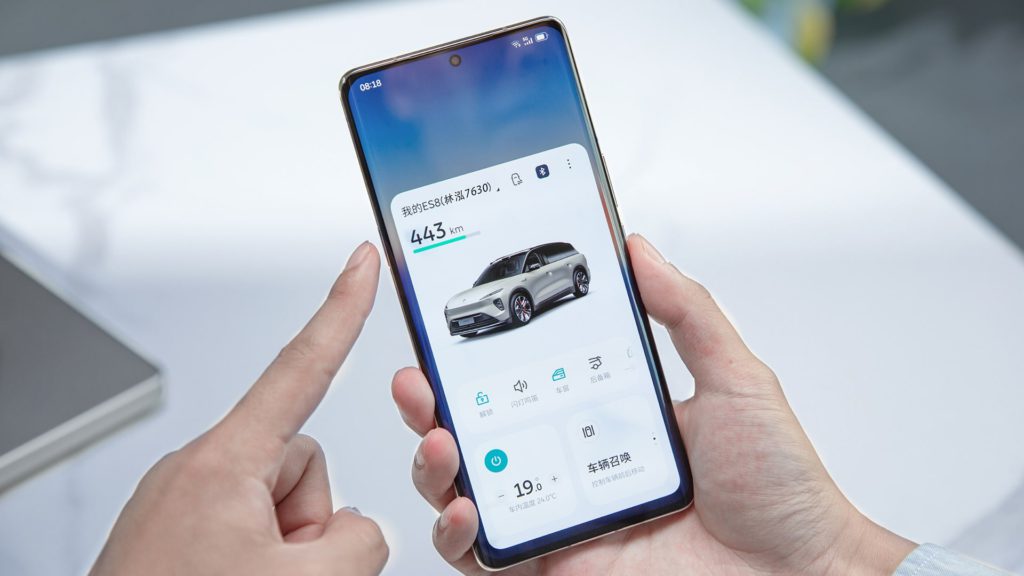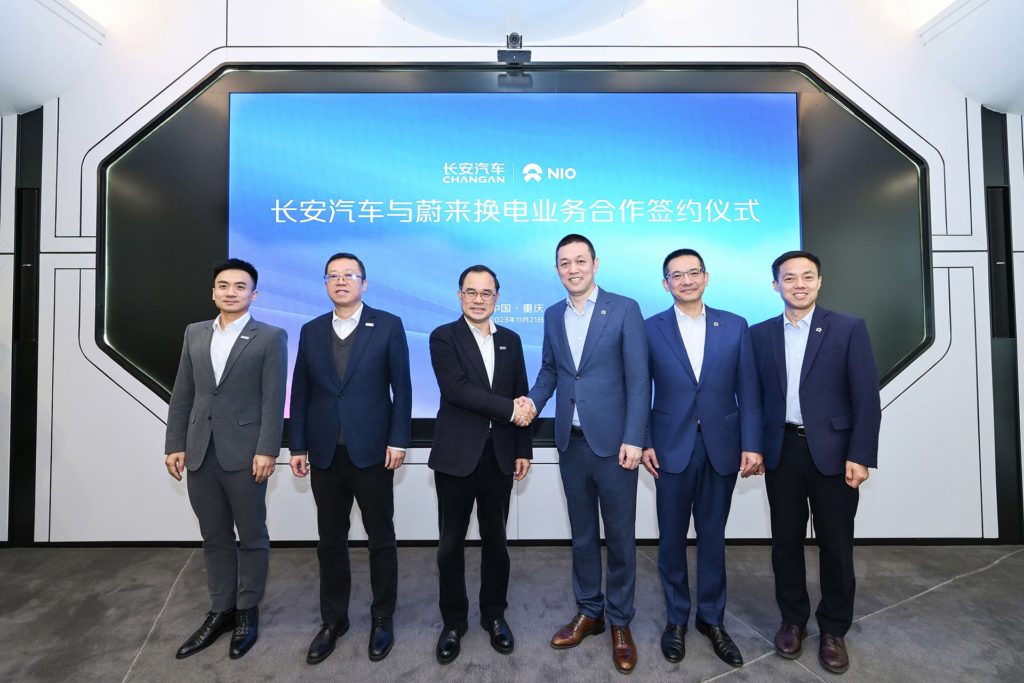“The present challenges are immense, but we can’t call them insurmountable. Compared to 2019, it’s a bit better—in 2019, we genuinely didn’t know where next month’s salary would come from,” said William Li, CEO of Nio, during an exchange on December 14.
This year witnessed an unusual intensity in the Chinese automotive manufacturer’s external communication. Both Li and Qin Lihong, president of Nio, were in attendance, with the former standing for nearly two and a half hours, offering comprehensive answers to a total of 140 questions regarding products, strategies, management, and the market, among other aspects.
During the 2019 crisis, Nio was hanging by a thread. After securing significant funding from a group of strategic investors led by the Hefei government, the company managed to turn around its operations. Sales quickly surged thereafter.
The present-day Nio, while not in dire straits, faces the prospect of slower turnarounds. Funding is harder to come by, and market competition is becoming fiercer. Despite its determination to lower battery replacement costs and aggressively expand its sales team, Nio’s sales only surpassed 20,000 vehicles for one month before tailing off.
In light of the lackluster performance, Li initiated a phase of reflection, admitting shortcomings in past product planning and organizational management. He acknowledged that product definitions have at times been imprecise, and capacity building for Nio’s sales functions have been delayed, resulting in Nio falling short by 20,000–30,000 cars. “This is the tuition we paid,” he said.
Meanwhile, aggressive project investments are straining Nio’s financial resources that were once abundant. According to Li, Nio’s past strategic plans were typically five years long, therefore lacking sufficient forecasts of external and operational risks. He also expressed frustration regarding the sluggish equity financing market, admitting to not foreseeing it.
“Looking back today, many things are clearer. For example, in 2021, the US market had zero interest rates, but how could it remain zero forever? We’ve been very fortunate during the unilateral upward growth of the past few decades. Now, there should be more risk and cycle awareness. Many Chinese entrepreneurs may need to catch up in this regard,” Li said.
In a discussion about the new energy vehicle market over the past two years, Li highlighted that plug-in hybrid vehicles and extended-range electric vehicles are expected to experience faster growth than pure electric models. This trend is mainly attributed to factors such as the increasing prices of lithium and the ongoing development of charging and swapping infrastructure. As lithium prices begin to stabilize, it is anticipated that more companies will enter the market, thereby enhancing the overall acceptance of electric vehicles (EVs) and generating increased interest in high-end all-electric vehicles over the next two years.
“Extended-range vehicles are selling well now, and there’s a reason for that. For users who can install charging stations at home and those who frequently travel long distances, it makes sense,” Li said. He added that different car companies have different choices. “Some friends advised me to make extended-range vehicles some time ago, but I calculated and found it unprofitable. The costs associated with selling 500,000 units of a car carrying a high-end range extender is sufficient to build 5,000 battery swapping stations.”
Swapping batteries is a unique advantage for Nio’s EVs. This substantial capital investment project increased the company’s financial burden to some extent. However, when Nio faced financial constraints this year, it explored financing options again, notably attracting multiple partners this year with its battery swapping technology. Li said he hopes to build 100,000 battery swapping stations to distribute as a large scale provider in the pure EV market.
“I urge all car companies to explore which models can undergo battery swapping modifications. Chassis modifications cost only a few million RMB, and selling an extra thousand cars covers that cost,” Li said.
Regarding brand and product positioning, Li’s plan is seemingly clearer. Nio’s main brand will continue to target the high-end segments while simultaneously entering the business market. Alps, its sub-brand, will target the family market, with plans for three models. “Family market cars are relatively well-defined—safe, comfortable, spacious, equipped with all the essentials, while offering longer ranges and lower usage costs,” Li said.
Reportedly, the validation build (VB) model of Alps has already been produced, though Nio is not in a rush to release it. “We decided to wait, let everyone have their go, and when everyone is exhausted, we’ll come in and turn the tables,” Li said.
The following excerpts are from the media exchange with Li and have been edited and consolidated for brevity and clarity.
Maintaining its high-end positioning while targeting families with a sub-brand
Q: Will Nio’s branding change following the release of the ET9, Nio’s latest flagship sedan?
William Li (WL): Overall, Nio will still want to push prices upward. We’ve evaluated many options. Developing single-motor EVs may increase sales a bit, but not significantly. We’ll stick to our high-end positioning.
Q: Flagship products often serve as “mascots.” Is the ET9 aimed at winning the market or elevating Nio’s brand?
WL: The executive flagship model can be seen as a sequel to the Innovation Day event (on September 21), showcasing our technological innovations in a car. Nio targets the high-end pure EV market, with a user base like ES6 owners—families. This year, models like the EC6, EC7, and the ET5T have performed well in niche markets.
To truly position ourselves as a high-end brand, conquering the commercial market is essential. Otherwise, profit and brand potential will be limited. Examples like the BMW 7 series allude to the strategy that brands like BMW, Mercedes, and Audi have utilized to make the commercial market their core base, a height Chinese brands have yet to reach. The upcoming car aims to decisively enter the executive flagship market.
Regarding executive flagships, the definition varies by era, but fundamentally, it must be a technological flagship.

Q: What is Nio’s sales target for 2024?
WL: We hope to set a baseline at 20,000 units with the potential for new entrants and competition. We aim to maintain a 40% market share.
Q: How will Nio sell cars in 2024?
WL: We’ll stick to our policy of no price cuts, focusing instead on continuously improving our sales system. Sales are a natural outcome, there are no big tricks. In 2021, without new models, Nio had its best year with a gross profit margin of over 20%, experiencing only a slight loss in the first quarter. With the Nio brand leading in technology, artificial intelligence hardware, and an expanding charging network, coupled with the industry’s shift toward pure EVs, 2024 and 2025 will likely witness the explosion of the high-end pure EV market.
In the past two years, due to infrastructure lag and rising lithium prices, hybrid and plug-in hybrid vehicles have outpaced the growth of pure EVs. However, the underlying factors still favor pure EV models. Once infrastructure catches up and lithium prices stabilize, the choice between buying a hybrid or pure EV will become clear.
High-end pure EVs have been a challenging market, with users less sensitive to operating costs but placing a higher value on brand consensus. However, as brand consensus builds, mass adoption can happen quickly. For example, from July, our sales in Shanghai surpassed all brands, surpassing BBA (Mercedes-Benz, BMW, and Audi) for five consecutive months, with a lead increasing over time. Once brand consensus is established, rapid adoption follows.
Q: How do you view the RMB 200,000–30,0000 (USD 28,000–42,000) pure EV market segment? What preparations will Nio make?
WL: This segment will be highly competitive. Therefore, Nio will avoid entering it. We’ll take a wait-and-see approach. Our sub-brand’s VB cars have been designed, but we’ll be patient and let others wear themselves out before entering the market.
Q: What is the positioning of Alps, Nio’s sub-brand?
WL: Both the car model and brand positioning target the family market. A vehicle’s marketability has its reasons. Family-focused cars are relatively easier to define based on family size—safety, comfort, ample space, good range, and low operating costs are essential.
This market differs from Nio’s high-end market, as it requires a clearer focus on family needs. For the family market, we will introduce only three models.
Q: What is Nio’s assessment of the market for next year? Will there be further pricing adjustments?
WL: The market competition in the coming years will be intense. Nio will not sacrifice price for volume. I internally emphasize “abandoning illusions.”
First, regarding the intensity of market competition, we must abandon illusions—it will undoubtedly be intense.
Second, we must abandon the illusion that we will sacrifice price for volume. Decisions to trade volume for price are easy to make but may not align with our strategic goals. Therefore, Nio will focus on improving gross profit margins and enhancing the sales service system to achieve sales growth.
Q: You previously mentioned strengthening Nio’s sales capacity, aiming for 30,000 monthly locked orders. Has that effort yielded results?
WL: Despite the tough situation of price reductions earlier this year, Nio maintained prices, stabilized quantity, and our monthly locked orders increased. Without sales capacity building, the numbers would have declined. Reflecting on this year, the most significant lesson is that we initiated sales capacity building too late. It should have started in February, and by June or July, it could have generated sales. There was significant interest at that time, but due to insufficient follow ups, we lost them. Otherwise, selling an additional 10,000–20,000 cars this year would have been possible.
Q: How is the sales situation for the Nio Phone? Can you comment on the project’s inputs and outputs?
WL: Sales are as expected, as our expectations were not overly high. I believe it will take three years to determine whether the phone project is right or wrong. This project is not purely financial. When major phone giants like Huawei, Xiaomi, or even Apple sell more cars in the future, we will see if we, as car manufacturers, can make phones.

Constructing 100,000 battery swapping stations and urging automakers to standardize battery models
Q: Nio will collaborate with Chang’an Automobile on battery swapping, but the first model won’t be available until 2025. What’s the reason for the lengthy timeline?
WL: Developing the first battery-swappable model, not just modifying the chassis, will undoubtedly take time. We have formed a special team and are in close communication with our partners to determine which models are suitable for battery swapping.
Q: How much potential is there for battery swapping collaborations with companies like Chang’an and Geely? What are the risks?
WL: There’s no significant risk for both parties. I urge all automotive companies to explore which models are suitable for battery swapping modifications. Chassis modifications are relatively inexpensive, costing an eight-figure RMB sum at most, and selling an additional thousand cars can likely cover that cost. For us, it’s a win-win situation: getting users to pay RMB 30 (USD 4.2) for a battery swap each time adds up to over RMB 1,000 (USD 140) in additional revenue per user, per year.
Q: What is Nio’s plan specifically for such collaborations?
WL: We will continue building stations and opening them up. The target is to reach 10,000 stations and subsequently 100,000 stations as soon as possible. When we reach 100,000 stations, it doesn’t matter if most users are not Nio owners—it won’t be a problem.

Q: Different vehicle models have different chassis structures, and battery sizes vary. This has constantly constrained the development of battery swapping technology. What actions is Nio taking to promote standardization?
WL: Initially, the voltage of Nio’s battery pack was only 400 volts (400V). Now, for the high-end market, we have an 800V fast-swap battery pack. After two years of refinement, we finalized it at the start of this year. This battery pack’s dimensions, interfaces, and compatibility are critical aspects for future shared battery packs. We also have an entry-level battery pack for a third brand.
Nio will offer three battery packs that are compatible with the mass market, entry-level, and high-end markets. These packs come in different sizes, correspond to various battery types, and provide standard, long, and ultra-long ranges respectively. This ensures coverage for 90%, 8–9%, and 1% of scenarios.
Q: In 2019, discussions were held about independently financing Nio Power, but it didn’t happen. Now, it’s back on the agenda. How have potential investors’ views on this business changed?
WL: Most people still see battery swapping as our burden, but I must emphasize that to be not the case.
In June, we stopped offering battery swapping services for free. The service itself has limited losses as the main expense is electricity costs. Considering everything, a single station costs RMB 300,000–400,000 (USD 42,000–56,000) annually and can last up to eight years while earning some income from energy storage.
Recently, we have reached agreements with investment companies specializing in battery swapping station assets. They will build stations, join our network, and pay fixed rent.
Focusing on short-term efficiency by trimming five-year plans to two
Q: It was mentioned that Nio will make adjustments to projects that do not contribute to profit or gross margin improvements within the next three years, such as in-house battery production. Is this a short-term or long-term move?
WL: Certainly, adjustments are underway for projects that cannot enhance our financial performance within a three-year timeframe. Taking battery production as an example, it involves two main aspects: R&D and manufacturing.
While there is an opportunity to enhance gross margin performance through R&D, achieving short-term improvements in manufacturing poses challenges. The manufacturing process has a prolonged investment period, tying up funds and requiring time for both ramp-up and yield improvement. Moreover, for in-house manufacturing to be financially viable, it must be more cost-effective than outsourcing, a process that inherently demands a substantial duration. Presently, we lack the necessary resources to support this endeavor.
To sum up, prioritizing R&D for gross margin improvement stands as a high priority, and if feasible, fixed asset investment for gross margin should be actively pursued. Scaling for gross margin is a natural progression, and effective management for gross margin is imperative.
Q: Xpeng Motors and Li Auto set the benchmarks this year in terms of cost control, especially the former. How do you view this situation, and will Nio take any action?
WL: Congratulations to Xpeng. Nio’s action? It’s learning—learning from our peers.
Q: How does Nio internally assess whether the company’s strategy is good or bad?
WL: Nio has made many good decisions and some bad ones. I’ve always said that when we’re doing well, we can make bad decisions, and when we’re not doing well, it’s easier to make good decisions.
In general, it’s challenging to evaluate our strategy ourselves. Starting from the end of 2019, we had a five-year strategic plan, which has now been shortened to two years. Resources are not infinite, and the market is highly volatile. Our weakness lies in underestimating external risks and risks in operating the company. If we were more cautious in estimating risks, many measures could have been taken earlier, presenting a significant improvement opportunity.
Q: In 2019, you compared Nio’s initial struggles to that of a “newborn baby.” Nio is no longer new. Faced with challenges like sales, cash flow, and operating models, how do you foresee Nio’s growth stages?
WL: Indeed, we are no longer new. This year, sales have grown by 33.1%, roughly in line with the overall market. Many peers have performed exceptionally well, and compared to them, we have a lot of room for improvement.
The pivotal strategy in the automotive industry is engaging in a product war. Looking back, there were specific product plans, encompassing positioning and details, that could have been executed more effectively. Inaccurate product definitions unquestionably led to a decrease in car sales, resulting in the loss of a few thousand units. This is the tuition we paid.
Q: The current environment for equity financing is not friendly. You’ve always had a keen sense of capital. Did you anticipate this?
WL: I didn’t anticipate it that well. My sense of smell isn’t that sharp.
However, I can share one thing. Looking back today, many things are clearer. For example, the USD market had zero interest rates in 2021. How could zero interest rates persist? Most Chinese entrepreneurs and innovators are fortunate—we live in an unilaterally upward era, and we lack a sense of various cycles. We consider many things normal, which may not be so from a societal development perspective. Many entrepreneurs in China may need to catch up on risk awareness and cycle awareness.
Q: Nio is experiencing external challenges which has led to several changes and the abandonment of previously held beliefs. Does this mean Nio’s original goals and long-termism will slowly change or disappear, turning it into a totally different company?
WL: Our original intentions will not change, and neither will our long-termism. However, long-termism is not an excuse for poor short-term execution.
Speaking about long-termism can foster a culture within the company that ignores short-term execution, which is not acceptable. I hope everyone has recently been seeing Nio as a company with the capabilities to execute.
KrASIA Connection features translated and adapted content that was originally published by 36Kr. This article was written by Peng Suping for 36Kr.

